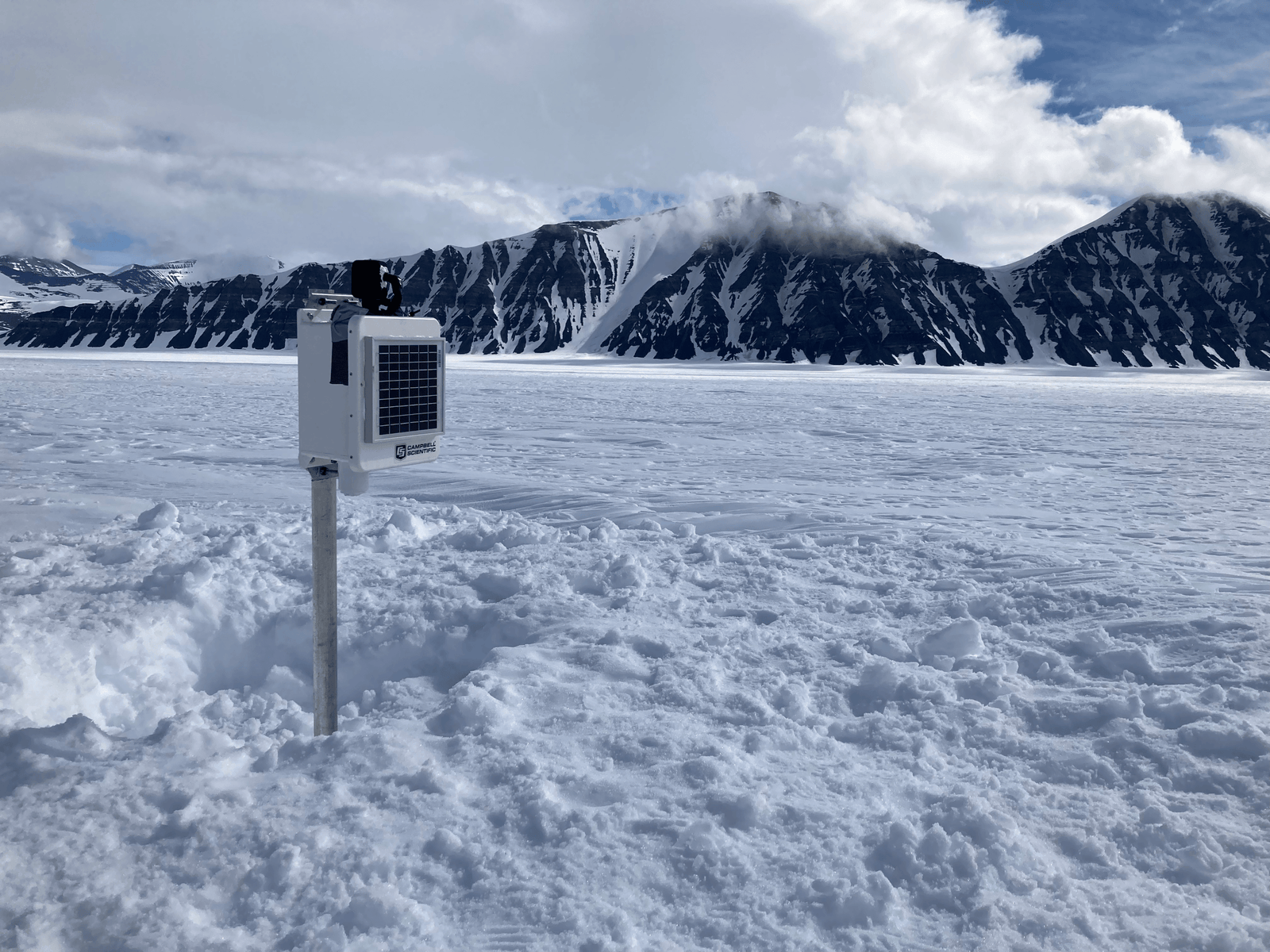Recently, we received a comment on our Instagram asking us the purpose of a time lapse other than just an excellent progress video. We shared a few examples of time lapse applications in construction: marketing and sales video, communicating with stakeholders, and remote monitoring. We are excited to share an additional application that benefits the world in this article.
The project
Our customer, Douglas MacAyeal, a Glaciologist/professor at the University of Chicago, used BlinkX (now UpBlink) in a project that studies surface melting and climate change effects on the George VI Ice Shelf located on the Antarctic Peninsula. Funded by the National Science Foundation, the project started in November 2019 as a summer project. The summer seasons in Antarctica are December, January, and February. We have received the information from November 2019 to November 2021, and the project will continue to 2024.
Here is the incredible story of his team’s journey and how BlinkX, with a custom power supply and HERO5, were part of the process of documenting their progress autonomously for two years!
The equipment
The team deployed 12 GPS (geodetic quality), three automatic weather stations, 12 water pressure gauges, and three cameras.
"We were looking for low cost, high quality, and a reliable camera, and we got that with CamDo."
MacAyeal mentions that two of the cameras on site were Harbortronics Canon DSLRs, and one was a GoPro HERO5 with a BlinkX* (now UpBlink). "We did have other cameras on site that had cost us five times more than a CamDo camera cost, but they all blew out their power and memory before the summer was out (2020). Whereas BlinkX with a custom power supply lasted from Nov 2019-Nov 2022". He said he couldn't believe that CamDo's equipment could capture 7,500 images and continued to take one picture every day, even at -40°C/-40°F. That is two years of the cameras running in the freezing temperature in Antarctica entirely autonomously without any human intervention or servicing visits!
The custom battery used was a 7Ah 12V deep discharge gel cell battery, a 10W solar panel, a charge controller, and a 12V to 5V USB voltage converter.
Here is a map of their field area:

Preparation: power, memory, and time lapse intervals planning
"We read everything you had published on your website."
MacAyeal mentions that they didn't come into the project "completely ignorant"; they knew about time lapse by using other expensive versions. They read, understood, and incorporated the educational resources published on our website to ensure all equipment was deployed correctly and that the project would be set up for success.
"We had to do power and memory management because it needed to work even when nobody was there. We know how the solar panels are charging our batteries, so we used the programming slots to preserve the power during the months of polar darkness."
MacAyeal mentions that his team determined the amp hours using the time lapse calculator. The calculator helped them configure the battery and the solar panel to ensure that they never run out of the battery to capture the scheduled intervals for photos. "When the sun went down, we stopped taking many pictures,"said MacAyeal. The time lapse calculator helped determine the capture schedule, memory, and power requirements.
What were the settings used for the time lapse videos?
"The advantage of BlinkX is that it allows you to program several different schedules within its system."
MacAyeal programmed five separate time lapse schedules that were pre-analyzed to be cognizant of the Polar lighting conditions and the solar panel/12V battery status. He used the following schedule:
|
|
Here’s a satellite image of where the GoPro was deployed:

Challenges
The power system was the most significant challenge, as the Li battery won't charge when the temperature is too low. They converted to "old-fashioned" and heavy deep discharge Absorbed Glass Matt 12V lead-acid batteries. They also used a PowerSonic 7Ah and a 10W solar panel with a high-quality (Campbell Scientific Inc.) solar charge controller.

The second challenge was to "environmentally harden" the camera and BlinkX (the wire from the BlinkX to the camera is short, so they kept BlinkX outside the enclosure that housed the battery). "We chose to use lots and lots of 2M 5200 marine sealant/adhesive. The BlinkX was sealed inside a bicycle inner tube, believe it or not… that worked fine,"MacAyeal explained.

The findings and what they mean
The project was able to uncover that the ice shelf experienced record melting during the 2019-2020 summer season, with the "most widespread melt and the greatest total number of melt days of any season for the northern George VI Ice Shelf," said research scientist Alison Banwell, lead author of a U.S. National Science Foundation- funded study published inThe Cryosphere. This was determined mainly by their satellite and weather stations. However, the role of the CamDo camera is that it fits into all the other data they are collecting.
You can see the melt from 0:05 to 0:12 on the left corner of the screen.
CamDo cameras give researchers scientific data in the form of optical images.
"[The] CamDo Camera is the one instrument that gives us the optical image of the cloud and the snow," said MacAyeal.
Our cameras helped capture the altitude of the clouds in the mountain range and provided optical images to see the cloud types and identify how much of the sky is covered by clouds. This is important because if clouds are low over the glaciers of Antarctica, the sun's energy tends to bounce back to the ice, which promotes the melting of ice.
Our cameras also give researchers an optical image of the surface of the snow. This assists in documenting how climate change impacts Antarctica's ice.
Why is this research necessary?
Surface meltwater ponding is potentially dangerous to ice shelves, according to Banwell, because when these lakes drain, the ice fractures and may trigger the break-up of ice shelves. "The George VI Ice Shelf buttresses the largest volume of upstream grounded ice of any Antarctic Peninsula ice shelf. If this ice shelf breaks up, ice that rests on land would flow more quickly into the ocean and contribute more to sea-level rise than any other ice shelf on the Peninsula." NSF Public Affairs article mentions.
We are honored to be a small part of such important research. Our time lapse cameras can be used for a wide range of applications, from construction project capture, documentation, communication, and remote site monitoring to scientific discoveries. Get started with your time lapse journey.
* UpBlink is the new version of BlinkX




